
On a lighter note, Peace is good….! Find some in your Hearts and Souls, and put an end to Wars in the World……!!!
#UNAcronymania!!!


On a lighter note, Peace is good….! Find some in your Hearts and Souls, and put an end to Wars in the World……!!!
#UNAcronymania!!!


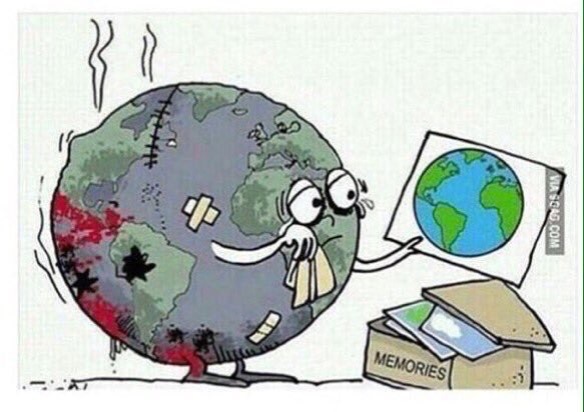


MSBI – Marine Species Breeding Industry.
An initiative to recreate the UK marine environment, for a sustainable world class fishing industry. (Written 15-22 June 2001 Edited 2014.)
INTRO.
Numbers of all species of fish have decreased dramatically and are continuing to decrease worldwide. Being a highly populated and developed nation, the UK has had a more serious impact on its coastal ecology than most countries, due also to international fishing of UK waters in the past.
If we simply carry on with present consumption patterns, there would be so many extinctions that the next generation, and the thousands following that one, will have zero produce. This is the kind of message that needs to be made publicly aware for MSBI planning to be successful.
Government fishing quotas have been put in place due to a severe lack of fish stocks, crippling many trawler companies. It is questionable whether these quotas are adequate for the recovery of the marine environment. The MSBI aims to boost fish numbers and the fishing industry dramatically, in the mid term, by toughening bans and quotas in order to achieve a highly productive and sustainable industry.
Water pollution is a serious problem for the fragile marine ecology around the British Isles, which must be dealt with if the aim of regenerating well populated ecosystems is to be achieved. Urban and industrial purification systems are essential if sustainable fisheries are to regenerate. Purification systems must be implemented in the UK with its new dedicated environmental stance on marine rehabilitation. A proposed system of pollution taxes aims to clean up the seas, and force polluting industries to implement purification systems for the benefit of all marine species.
Being an isolated series of islands, on the very edge of the Western Hemisphere, the UK has the opportunity to create a vastly improved coastal fisheries system. Co-operation with neighbouring fishing industries will be essential for the restocking of migratory species, and also to satisfy the demand for fish by the British population, while the UK MSBI proceeds.
AIMS.
To allow all marine species the chance to regenerate their populations over a 15 year period, in order to create a far more efficient, productive, and long term sustainable fishing industry by the end of that time. Restrictions will be put in place and lifted in the most efficient manner possible for the restocking of all species.
It is proposed that there is a total ban on fishing in an exclusion zone around the United Kingdom for 5 – 15 years, depending on when Maximum Sustainable Quotas are reached. Continual assessments will have to be made to determine the exact status of each species, and ecosystem, in order to allow maximum efficiency fishing to commence as soon as possible, depending on the progress of the breeding process of the MSBI.
An aim would be to make the temporary fishing bans and quotas universally popular. This will involve public awareness, by promoting the MSBI as totally beneficial for the nation. The industry will become far more profitable, with bans being lifted as soon as each species is sufficiently well established. The time that each species takes to re-establish itself will vary. Acceptance of the bans will come through guarantees that fishing will re-commence as soon as Maximum Sustainable Quotas are reached.
Jobs will be created for marine biologists, redundant boats, diving teams, fishermen and fishing communities, re-creating ecosystems almost from scratch on many parts of the coast where the intensive drag netting has devastated the sea floor. There will be a major re-focus of efforts and work schemes towards repopulating and maintaining sustainable marine ecology, including marine flora, rather than pure exploitation.
Existing knowledge of traditional fishing grounds and breeding grounds will be used for the re-creation of highly populated species hot spots, with the emphasis initially being on economically profitable native fish and plant species. This would involve concentrating efforts on areas with the most potential for the various species. Specialist programmes would use the knowledge to repopulate each individual species in their traditional areas off the coast.
The creation of both sea and land based Protected Breeding Areas, in areas where the ecology is still intact and able to support breeding populations, or on land in large tanks if immature members of species are not able to survive in the wild, is the plan. Once strong enough to survive the fish could either be released into the wild, for recolonisation of much larger areas, of used to supply the human demand once they reach maturity.
The aim would be to establish a hugely diverse UK coastal marine ecology, which drives a more efficient fishing industry. A blanket ban on fishing for 5 years, with quotas becoming available over the next 10 years depending on fully monitored progress, is perceived to be necessary if this ambitious aim of boosting the marine populations is to become reality.
The UK would be taking a strong environmental stance for the sake of enormous benefits in the mid to long term future. It is hoped that the success of the programme will become obvious within 5 years, and that it will encourage other nations to follow the UK’s lead, adopting extremely beneficial environmental policies and practices.
PROPOSALS.
Nationalise the fisheries, trawling industry, and fish markets, so that there is sufficient co- ordination, funding and legislation from the government to ensure that the MSBI is put in place effectively with all involved playing their part. It would be almost impossible to co-ordinate the detailed procedures, and the many people involved in the MSBI, in any other way.
Nationalisation would allow fishing quotas to be tightly regulated in order to establish Maximum Sustainable Quotas, which will undoubtedly be an improvement on todays rapidly declining catches.
The whole programme is an investment in the future of the oceans. It must not be looked upon as the destruction of the trade, but as the logical process needed to give the entire trade a successful future. (Everybody will have to adapt for a few years, then the industry will be stronger than it has been for many years, and sustainable).
The creation of aquarium/tank based breeding programmes would kick-start the creation of a wide range of species. It is assumed that many marine ecosystems are so severely damaged by drag netting around the heavily trawled UK coasts, that many species are no longer present in the areas that they traditionally inhabited. Creating a breeding stock in captivity, for release into monitored marine ecosystems would appear to be sensible to help repopulate wild stock, however the science, Marine Biology, must be applied to maintain the health of the communities.
There will be many jobs created by this sound environmental programme- the rehabilitation process of the entire UK coastal zone. Knowledge of previously existing habitats will be needed. Re-creating them in situ could involve many thousands of boats and alternatively employed fishermen, who would be playing a crucial role in regenerating their livelihood. This work will play a decisive role in making the bans possible – the fact that there is alternative employment for the boats and crews.
Trawlers could be converted for different roles during the 15 years existence of the MSBI, taking cargoes of young fish, plant colonies, food supplements, divers and research crews (assessing numbers and finding the most suitable habitats for the recolonisation process), Seabed Landscaping (where the drag nets have destroyed all natural features), setting up marine enclosures for secure fish farming, garbage clearing trawlers….. but concentrating on restocking the multitude of lifeforms in new and existing intact habitats.
As well as fish species, there is the need to regenerate the many plant species, as well as different types of zooplankton and phytoplankton etc. Pollution will have played a devastating role in destroying these fragile lifeforms which are essential to support fish shoals and larger marine mammals. Seabed trawling techniques and the vast amounts of by-catch waste have devastated many lifeforms.
FUNDING.
Government funding could be generated from pollution taxes. Any industrial complexes that are pouring toxic waste into rivers, or directly into the sea, should be made to pay pollution taxes, the amount depending on the severity of the damage that the toxic waste is causing to marine ecosystems.
MSBI subsidies. The marine biologists, existing trawler businesses, fish mongers, fish and chip shops, fish markets etc. will have to be subsidised with the increased cost of imported fish, and the decreases in business for the first few years of the MSBI. Trawlers and fishing communities, it is hoped will be less of a concern with alternative employment prospects.
The UK government ought to provide finances for jobs in a UK MSBI, as eagerly as it does for the UK military, UK NHS, UK Benefits etc. as a fishing industry is vital for the wellbeing of future generations. If the financial provisions are efficiently controlled, many worthwhile jobs will be created in this industry which will become more and more profitable when the benefits of the new breeding industry start.
Fish imports. Bearing in mind future profit potential, the UK govt. could control the prices of fish in nationalised markets, subsidising the trade when necessary to ensue that it did not collapse. If there was legislation that reduced consumption of fish to Fridays alone, this would make supplying of all the fish markets more convenient.
BREEDING STRATEGY.
Breeding the maximum possible number of marine species (including plants, shell fish, invertebrates etc. which have to be propagated as part of the food chain) will be the optimum aim. The balance of species has been drastically altered around the UK due to years of intensive fishing, and symbiotic relationships will have to be researched and established for the most complete regeneration of self-sustaining natural marine ecosystems.
Protected breeding areas need to be set up around the coast where conditions make breeding prospects high. This will be influenced by the bans and quotas, as well as the improving condition of the marine ecology in the UK. Traditional breeding grounds will be most suitable for balanced populations, and establishing detailed maps of these beneficial areas where biodiversity has traditionally flourished will be most useful, with human symbiosis being the catalyst to re-create entire food chains.
Enclosures at sea will probably be the most cost effective form of captive breeding. Building up the strength of the fish populations and releasing them into the wild to re-create natural breeding populations and restocking marine life around our coasts is the plan. Marine biologists are critical to getting the science right, so that Fish Farming does not have negative consequences for the coastal ecology.
Alternatively, land based aquariums could be created on a broad scale, to breed species that are not hardy enough to survive in the seriously disturbed conditions on the sea bed and by the upset nature of the food chain. On shore breeding facilities and fish farming would if developed be highly productive to supply the human demand for fish in the future.
On-Shore farms and Protected Breeding Areas need detailed research and development. Marine biologists, along with fishermen and converted trawlers with diving crews (for transporting live fish, plant life etc.) will be greatly encouraged to develop the field of Sea Fish Farming with the ecological policy of using wild and free environments whenever possible. Ideally wild breeding populations would be the least expensive and healthiest option, but to create such sustainable ecology which once existed, the Governments need to kick start a new Fishing Industry which is collapsing.
INTERNATIONAL INVOLVEMENT.
The territorial requirements of each species will mean that there must be a degree of co- operation among N.W.European countries, if UK waters are going to be stocked to their maximum potential. Many species will not migrate, however certain species will need protection in international waters in order for them to fully repopulate. It is hoped that the UK initiative will inspire all countries to get involved and to take the opportunity to repopulate whichever particular species use their waters.
Countries providing fishing rights for British trawlers and preferential terms of trade to the UK will be provided with preferential exports in return, once the UK fisheries are up and running again. The extent of the deals made must take into consideration the fact that we will have 15 years of imports to pay back, possibly from many different countries, along with the fact that the UK fisheries must be fished sustainably in the longer term.
The suppliers of fish to the UK in the short term will be important, as there will be concerns for the future of all marine environments. It would be highly unethical and unpopular to deplete other countries fisheries, just so that we could re-establish our own. A tightly monitored and controlled import trade would utilise stocks only from well stocked sustainable fisheries.
Phasing the bans out, and phasing in local, regional, national and international fishing quotas, will be a gradual and complex process, largely depending on the success of the new MSBI in the UK.
THE FUTURE.
It is likely that fish stocks will continue to decrease in fisheries around the world. The UK would be in a position 15 years into the future to be able to enjoy the benefits of a highly productive, and efficiently controlled National Fishing Industry. Demand from nations that have not acted to re-populate their fish stocks will maintain high prices, and the UK fishing industry will be safeguarded for the future, allowing UK fishermen to enjoy the reliability of their diverse marine environments and fisheries around the many UK islands, thanks to far sighted efforts of the MSBI.
It is likely that healthy UK fisheries would maintain higher numbers of fish in neighbouring waters from a degree of overflow. The health of neighbouring waters should also be taken into consideration when considering the profitability of the MSBI in the future.
The MSBI model proposed by the UK could be adopted area-by-area around the planet. This would create stages of returned marine health. Ultimately there would be a bountiful and sustainable global marine ecology and fishing industry, which would see fish prices dropping. This must be seen as a positive step – cheap and plentiful natural marine resources for all.
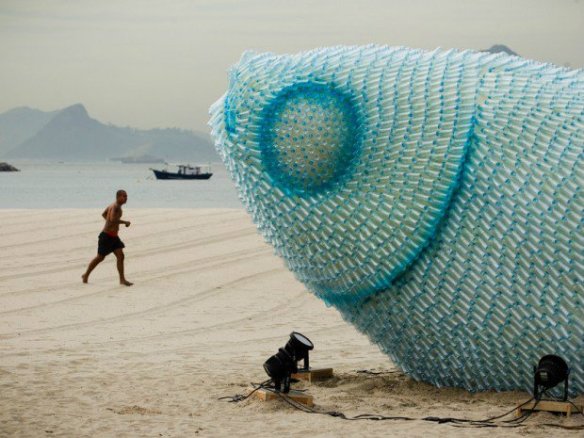
Postscript:
It may be possible for marine life to repopulate our Oceans if they are given the chance, but the problem of Plastic Pollution entering the food chain, and killing many species in the process, is making the future for marine life far more precarious…. Tsunamis have increased the levels of pollution greatly by dragging the devastation on land back into the water, and what is not mentioned in this article is that we have to collect the marine garbage both on the shorelines and under water for the MSBI to succeed. This means that there are Jobs for many people in idyllic coastal locations around the World, and for trawlers and divers who are needed to detox all the discarded fishing nets and tackle on sea beds and in the gyres where plastic bags etc. naturally gather. If we do not do this the problem of species getting caught up in plastic and eating micro plastics etc. could bring about the death of the Oceans very soon which would make the future for humanity and every species which relies on bountiful Oceans very precarious indeed……
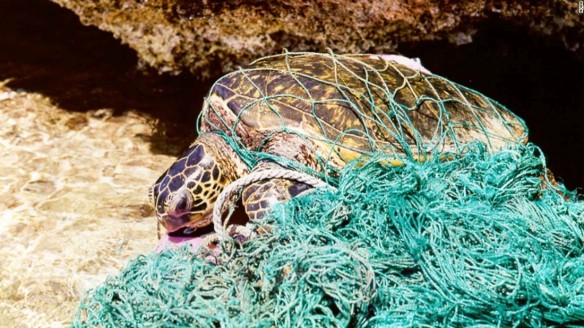

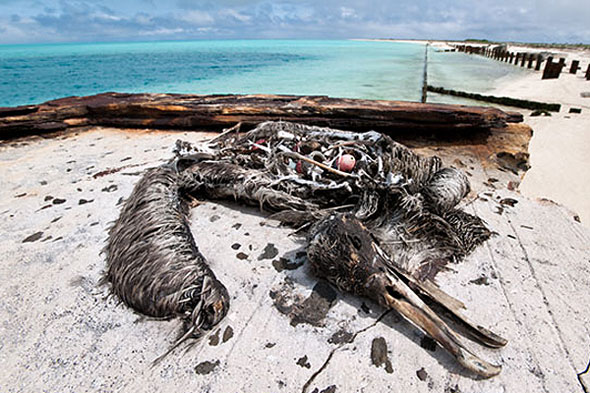
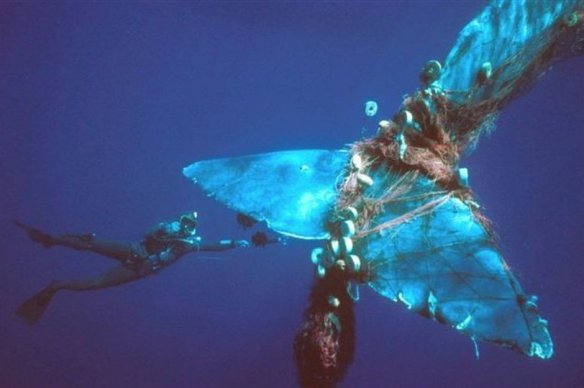
PLASTIC – Putting Land And Sea Through Intense Chaos
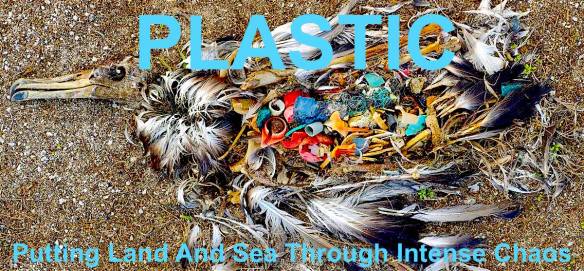
#UNAcronymania on Twitter
Archive – Global Paradise Management Plans
Flood Prevention Initiative 2001.
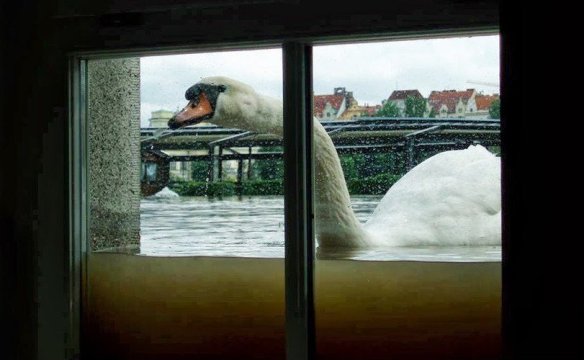
One does wonder what to do about the human drainage problems….!

INTRODUCTION.
Flooding rivers are becoming an ever more serious problem in the UK and abroad. This Flood Prevention Initiative points out some unrecognised reasons for the problems, and suggests useful ways of preventing unpredictable flooding of river systems in the future.
COMPUTER MODELLING.
A first step towards flood prevention would be to create computer models of complete river catchment areas that have flooded in the recent past.
The aim would be to register details of changing patterns of land use throughout the catchment areas of these rivers. There needs to be extensive research into changing vegetation cover, as different types of vegetation act to hold or release water. Land use patterns that would have to be analysed include deforestation on hillsides, and intensive grazing patterns which have a dramatic impact on the amount of water retained, especially on highlands where most rain falls.
The models would also have to provide details of drainage systems (agricultural, urban or others) that have been put in place over the past few decades, as these are all designed to direct water as fast as possible into river systems which is exactly what causes flooding.
The catchment area computer models could also contain details of the multitude of essential wetlands that have disappeared over the past decades.
The idea is that the computer models of river catchment areas that have already flooded downstream could be used to determine all river systems that are in danger of flooding, by establishing common factors, represented on the models, which are responsible for the floods. If a river catchment area displays the required ‘patterns’ for flooding to be considered a risk, such as hillside deforestation, then the measures contained in this report (notably re-instating wetland ecosystems) could be put into practice to respond to the dangers.
DRAINAGE SYSTEMS.
Over the past decades many drainage systems have been put in place, even including extensive moor land ditches. This has been done to improve the quality of the land for human use, (such as for stalking or grouse shooting). Lowland areas also have intensive drainage systems, many put in place to increase the area of land suitable for crop production. There have also been extensive drainage systems put in for housing developments, to stop roads flooding, in industrial sites, gardens etc.
When one realises that wetlands are the ultimate way to prevent run-off and flooding, and recognises the extent of the drainage systems that have been created to drain all the water, the devastating influence of the extensive drainage systems starts to become evident.
Drainage systems have the effect of greatly increasing the speed and amount of water that enters the rivers, whereas before, water would have been naturally retained in marshes, bogs, ponds, lochs, lakes and a wide range of other ecosystems. Unfortunately humans have in the past viewed wetlands as useless and unproductive, so many have disappeared.
CHANGES IN ECOLOGY AND VEGETATION.
Over the past years there have been increasingly rapid changes in the types of vegetation within entire catchment areas. Natural vegetation systems are very efficient at holding water, for example sphagnum moss or multi-layered forest ecology on a hillside. These types of ecology have been viewed as expendable for the demanding agricultural and other human industries, and much has been destroyed to be replaced by crops, concrete, or seriously depleted ecosystems.
Consider sheep grazing of sphagnum mosses over highland regions. As sheep have been introduced to new areas of the highlands, the natural water-retaining vegetation has been systematically reduced. When grazing becomes poor, new areas are made available to the sheep, and over the decades, a vast amount of water retaining vegetation has been over-grazed, resulting in faster and increased runoff into the river systems.
On more lowland areas, the process is similar, but more advanced. Most areas of biodiversity have been replaced by agricultural crops, increasingly due to the increasing power of machinery making the cultivation of peripheral wilderness possible. Many natural flood plains are now prevented from flooding to be used for agriculture, which is making the danger of flooding downstream far greater.
When modern farming techniques are considered, such as flood banks and the use of heavy rollers and machinery which compact the soils, and when considering the new varieties of crops planted with totally unnatural root structures to replace the natural vegetation, it is possible to understand that the changing patterns of land use are very much responsible for the incredibly fast runoff of rainwater and the subsequent increasingly frequent floods.
[It would be advisable to study the root structures of all modern crops, to find out which compact the soil and are poor at water retention, and on the other hand which help retain water on the vast areas of land which they cover.]
RE-INSTATING WETLAND ECOSYSTEMS.
The best way to tackle the problem of rivers flooding would be to reinstate wetland ecosystems, in order to increase the natural water retention capabilities of as much land as possible within vulnerable catchment areas. Trees, especially hillside forests, play an important part in retaining water in situ.
Re-instating wetlands could be done by blocking off many of the dangerously extensive drainage systems, to re-create wetlands which hold water until rivers subside. Specific water holding areas should be designated using old map details, and re-flooded to prevent the dangerous artificial runoff patterns.
The destruction of wetland ecosystems has been almost 100% in certain parts of the UK and abroad, yet natural wetlands with water retaining vegetation are the best way to prevent millions of people’s homes from flooding downstream.
Different types of natural wetlands and vegetation need to be analysed to assess their flood prevention capabilities, and to assess how realistic ecosystem replacement projects would be. Some types of vegetation would re-colonise better and be far more water retentive that others.
Re-created wetlands would have the important additional benefit of supporting wildlife, for example the extensive range of migratory birds that rely on standing water for their often extremely long and nowadays increasingly hazardous journeys.
The re-instated wetland ecosystems could be used as tourist recreation attractions – wildlife centres are becoming increasingly popular. In these days of non-profit making agriculture (which has lead to the implementation of the drainage systems for expanded croplands), the wildlife areas could, if organised well, provide a useful source of alternative income for the landowners.
CONCLUSION.
The procedures recommended above, as well as having a huge beneficial impact on the environment, would almost guarantee the enormous benefit of protecting millions of homes downstream from flooding rivers, more efficiently and less imposingly that spending vast amounts on flood barriers in towns and cities.
By using computer-imaging techniques to reveal changes in vegetation cover, land use and drainage systems, models could be created to determine risk river systems. Those that display dangerous characteristics, which would be similar to the characteristics of river catchment areas that have already flooded, could start to put the natural and hugely beneficial Flood Prevention Initiative into place.
Re-instating natural wetland ecosystems to hold rainwater and slow down the rise of rivers, on as wide a scale as possible, would be hugely popular with humans. The healthy ecosystems re-created to hold back the flood waters would also be an effective way of helping many other valuable forms of wildlife.
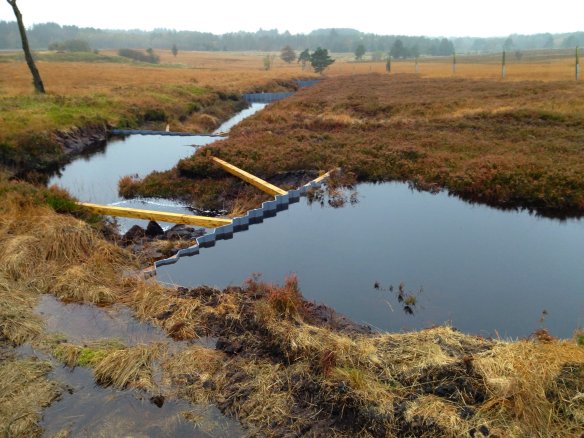
DITCH Flooding – Dams In The Catchment Hillsides
(Better by Beavers!!)
+ DITCH Emptying – Do Increase Tree Covered Hillsides
#UNAcronymania!!!
War in the Middle East.
As far back as Neolithic Jericho, with its walls protecting a relatively wealthy population of settled human beings, who were developing new culture and lifestyles in a built up community with all the artifacts that went with evolution 10,000 years ago, battles have been fought in the Middle East.
Settled life brought about inequalities. Their collection of possessions would have included food stores, specialized polished stone tools (including sickles and hoes), painted pottery, stone and bone carvings, eyed bone needles, bead and shell jewellery, sandals, new animal and plant clothing, reed mats, baskets, pestles and mortars, querns, headdresses, incense, oils etc.
Outside the new towns were Mesolithic nomadic stone age hunter gatherers still roaming vast tracts of wilderness, who started to hear about some of the accumulated possessions in the highly evolved new towns. Raiding became frequent, hence the walls.
There were tribes among the outside nomadic populations who developed the raiding and fighting into the art of warfare, using spears, bows and arrows, poisoned blowpipes, horses- the latest weapons to overcome whoever they chose to raid.
Many Empires and Kingdoms rose and fell in the Fertile Crescent including the Land of Sumer and Akkad, Assyrian Empire, Babylonian Empire, Persian Empire and many others. For thousands of years, as cultures have grown and been replaced, the invading barbarians have retained and developed the art of fighting for territorial and resource gain.
The fighting spread and escalated into perpetual battles between the amalgamating civilizations evolving in and around the Middle East.
This warring culture has today been witnessed all over the world. It seems that Empire building by invading and conquering neighbours has been extremely popular for some time now.
It is a wonder that there has been any peace at all, but that peace has got to be preferable.
Find #PEACE @MiddleEast
The problems of war are being handled by the publication of the UNARMED document (link below), however Iraq is still deteriorating, into a hellish environment, where once the Euphrates and Tigris Rivers supported the famous Fertile Crescent, Mesopotamia.
The problems in Iraq could be solved by the reconstruction of this Paradise ecosystem.
Getting the military involved with the reconstruction, as proposed in the UNARMED document, would provide life support systems, natural resources, jobs, security, happiness and peace, which are sadly lacking from this seriously destroyed ecosystem.
Replacing the Fertile Crescent should be a priority for UNARMED recruits, as this once vast ecosystem was such a precious jewel in the evolution of human civilization, maybe even The Garden of Eden.
There will be remaining fragments of vegetation and animal species scattered and hidden away. All these fragmented ecosystems have the potential to spread and recolonize, with pertinent human involvement. Fragments must be protected and carefully managed, if they are to be the birth places of future ecosystems where man can live in peace.
The large scale desertification of the Planet must stop and be reversed. Recruiting the military to replace the Fertile Crescent, and other once fertile deserts, is a viable proposition with details of the re-greening process in the attached document.
Kiz Zabrowski. Global Paradise Quest 2004….
https://paradisequest.wordpress.com/2012/09/28/unarmed-doc-peace/
Future paradisequest <Follow The Sign!
When We Step On The Earth, We Are Walking On All Of Our Ancestors Remains. Observe, Learn, Grow And Love The Earth…. And Make The World A More Wonderful Place. In Dreamtime The Natural World Is A Global Paradise, We Humans Are Her Spiritual Guardians…….

Visit This Logo @CGI_Advertising Tweets!!!
complete solutions to create Paradise On Earth......
Original Films, Permaculture, Education, Travel, Biodynamics, Community, & Holistic Health
perspectives on the biodiversity crisis
My continuing adventures in North Alabama!
My beekeeping bumbles
Independent distributors for Wikaniko
an undercurrent of environmentally conscious rambling
A research hub specialising in sustainable development
Global Disaster Watch - An Overview
Our planet is weaker every minute, we have a chance to help him and heal his wounds.
The official blog of Nature's Best Photography Magazine. Photo contests, publisher editorials, camera tips, and more.
wildlife conservation and welfare
Adventures of a dominican photographer traveling the world.
Ideas That Grow and Bloom
San Francisco Bay Area portrait and nature photographer
Simple life on a little piece of land.
Experiences and reflections of a Missouri entomologist
Macro Photography - of the wild life at our feet, its reflective nature and practical value - a meditation.
The Official World Climate Summit blog
Ponderings & Successes on a Sustainable Earth for the Next Millenium
Sharing Knowledge about Solar Energy
Our Space in Sustainable Development
Just another WordPress.com site
The official blog of national parks charity GreenSpace
Caring for endangered life in all forms.
Regenerative Health of People and Planet
Towards a water secure world
For the lastest blog posts please visit www.un-redd.org.
co-creating for urban sustainability
Conservation research ... with bite
be a part of it
Climate Change and Sustainability Videos